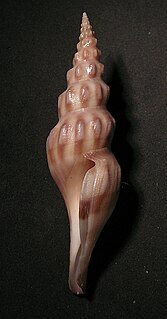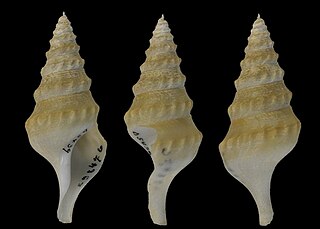In Greek mythology, Agelasta was the name of the stone on which Demeter rested during her search for Persephone.

The Luzon bleeding-heart is one of a number of species of ground dove in the genus Gallicolumba that are called "bleeding-hearts". The Luzon Bleeding-heart is the species in which the "blood" feature is most pronounced, with the reddish hue extending down the belly, furthering the illusion of blood having run down the bird's breast.

The Philippine duck is a large dabbling duck of the genus Anas. Its native name is papan. It is endemic to the Philippines. As few as 5,000 may remain. Overhunting and habitat loss has contributed to its decline.
Balakata is a genus of trees in the family Euphorbiaceae first described as a genus in 1999. It is native to Southeast Asia, southern China, the Himalayas, and New Guinea. The genus name was inspired by balákat-gúbat ("shoulder-tree"), the Philippine common name for B. luzonica.

Vanda luzonica is a species of vanda, a flower of the orchid family. It is a rare type of orchid and is endangered. Vanda luzonica is named after the island of Luzon in the Philippines.
Balakata luzonica is a species of flowering plant in the family Euphorbiaceae. It is distributed from the Philippines to New Guinea.

Comitas is a genus of medium-sized sea snails, marine gastropod molluscs in the family Pseudomelatomidae.
Nyctemera luzonica is a moth of the family Erebidae first described by Charles Swinhoe in 1917. It is found in the Philippines.

Mesosini is a tribe of longhorn beetles of the subfamily Lamiinae.
Agelasta is a genus of longhorn beetles of the subfamily Lamiinae.

Gnoma luzonica is a species of beetle in the family Cerambycidae. It was described by Wilhelm Ferdinand Erichson in 1834, originally as G. luzonicum. It is known from the Philippines.
Agelasta pardalina is a species of beetle in the family Cerambycidae. It was described by Heller in 1924. It is known from the Philippines.
Agelasta andamanica is a species of beetle in the family Cerambycidae. It was described by Stephan von Breuning in 1935. It is known from the Andaman Islands.
Agelasta catenata is a species of beetle in the family Cerambycidae. It was described by Francis Polkinghorne Pascoe in 1862. It is known from Malaysia, Cambodia, Laos, Borneo and Vietnam. It contains the varietas Agelasta catenata var. infasciata.
Agelasta balteata is a species of beetle in the family Cerambycidae. It was described by Francis Polkinghorne Pascoe in 1866. It is known from Malaysia, Java, and Sumatra. It contains the varietas Agelasta balteata var. niasica.
Agelasta tonkinea is a species of beetle in the family Cerambycidae. It was described by Pic in 1925.
Agelasta konoi is a species of beetle in the family Cerambycidae. It was described by Masao Hayashi in 1956.
Agelasta yonaguni is a species of beetle in the family Cerambycidae. It was described by Masao Hayashi in 1962. It is known from Japan.
Agelasta obscura is a species of beetle in the family Cerambycidae. It was described by McLeay in 1884.

Leucosyrinx luzonica is a species of sea snail, a marine gastropod mollusk in the family Pseudomelatomidae, the turrids and allies.






